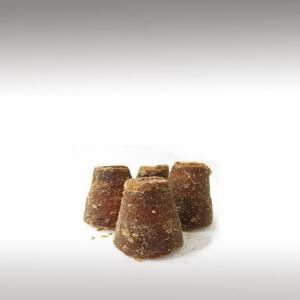
SUGAR CANE SUGAR (SACCHARUM OFFICINARUM) - INGREDIENTS

BASE / GENERAL DATA
Information submited: February 6, 2015 Modified: June 4, 2018 By: OperaDreamhouse
Sugar Cane is one of the several species of tall perennial true grasses of the genus Saccharum, native to the warm temperate to tropical regions of South Asia, and used for sugar production. Brazil was the largest producer of Sugar Cane in the world. The next five major producers, in decreasing amounts of production, were India, China, Thailand, Pakistan and Mexico.
Sugar Cane predominantly grows in the tropical and subtropical regions. In India, between the sixth and fourth centuries BC, the Persians, followed by the Greeks, discovered the famous "reeds that produce honey without bees". They adopted and then spread sugar and Sugar Cane agriculture. A few merchants began to trade in Sugar - a luxury and an expensive spice until the 18th century.
It is theorized that Sugar Cane was first domesticated as a crop in New Guinea around 6000 BC. New Guinean farmers and other early cultivators of Sugar Cane chewed the plant for its sweet juice.
Boiling houses in the 17th through 19th centuries converted sugarcane juice into Raw Sugar. These houses were attached to sugar plantations in the Western colonies.
Sugar Cane is a tropical, perennial grass that forms lateral shoots at the base to produce multiple stems, typically three to four metres high and about five cm in diameter.
Sugar Cane predominantly grows in the tropical and subtropical regions. In India, between the sixth and fourth centuries BC, the Persians, followed by the Greeks, discovered the famous "reeds that produce honey without bees". They adopted and then spread sugar and Sugar Cane agriculture. A few merchants began to trade in Sugar - a luxury and an expensive spice until the 18th century.
It is theorized that Sugar Cane was first domesticated as a crop in New Guinea around 6000 BC. New Guinean farmers and other early cultivators of Sugar Cane chewed the plant for its sweet juice.
Boiling houses in the 17th through 19th centuries converted sugarcane juice into Raw Sugar. These houses were attached to sugar plantations in the Western colonies.
Sugar Cane is a tropical, perennial grass that forms lateral shoots at the base to produce multiple stems, typically three to four metres high and about five cm in diameter.
The stems grow into cane stalk, which when mature constitutes approximately 75% of the entire plant. A mature stalk is typically composed of 11 - 16% fiber, 12 - 16% soluble sugars, 2 - 3% non-sugars, and 63 - 73% water.
Sugar Cane cultivation requires a tropical or temperate climate, with a minimum of 60 centimetres of annual moisture. It is one of the most efficient photosynthesizers in the plant kingdom. It is a C4 plant, able to convert up to one percent of incident solar energy into biomass.
Sugar Cane cultivation requires a tropical or temperate climate, with a minimum of 60 centimetres of annual moisture. It is one of the most efficient photosynthesizers in the plant kingdom. It is a C4 plant, able to convert up to one percent of incident solar energy into biomass.
Sugar Cane is cultivated in the tropics and subtropics in areas with a plentiful supply of water, for a continuous period of more than six to seven months each year, either from natural rainfall or through irrigation. The crop does not tolerate severe frosts.
Traditionally, Sugar cane processing requires two stages. Mills extract Raw Sugar from freshly harvested cane and "mill-white” Sugar is sometimes produced immediately after the first stage at Sugar-extraction mills, intended for local consumption.
Traditionally, Sugar cane processing requires two stages. Mills extract Raw Sugar from freshly harvested cane and "mill-white” Sugar is sometimes produced immediately after the first stage at Sugar-extraction mills, intended for local consumption.
Sugar crystals appear naturally in white color during the crystallization process. Sulfur dioxide is added to inhibit the formation of color-inducing molecules as well as to stabilize the Sugar juices during evaporation.
Sugar cane processing produces cane sugar (sucrose) from sugarcane. Other products of the processing include bagasse, molasses, and filtercake.
Sugar cane processing produces cane sugar (sucrose) from sugarcane. Other products of the processing include bagasse, molasses, and filtercake.

SPIRITUAL PRACTISES DATA

MEDICINE / HEALTH DATA

BEAUTY / COSMETICS DATA

FOOD / COOKING DATA
COMMENTS
No comments.
Newest mixtures containing Sugar Cane Sugar (Saccharum Officinarum):

Home made wild dandelion honey
June 10, 2015

Silky summer legs scrub
February 6, 2015


